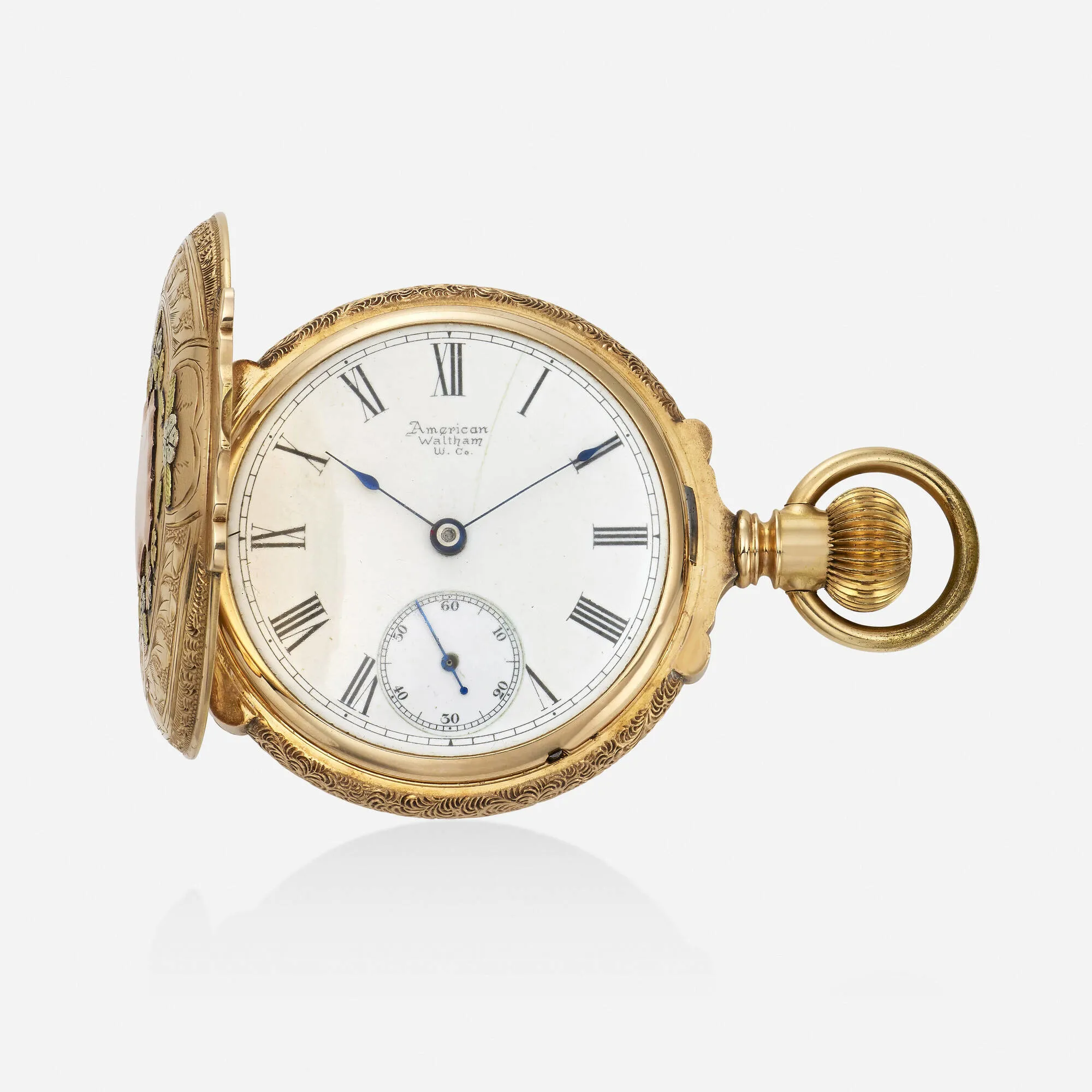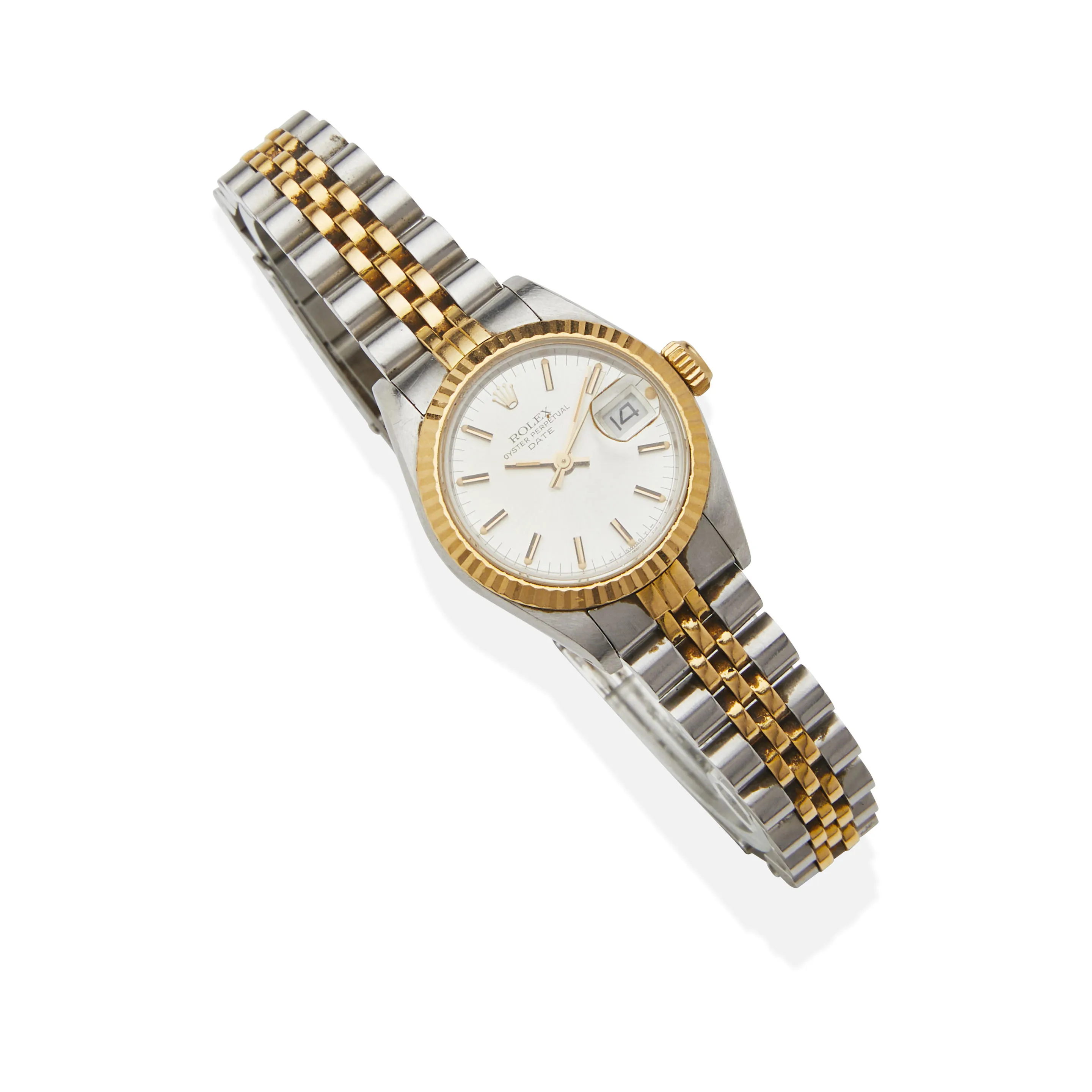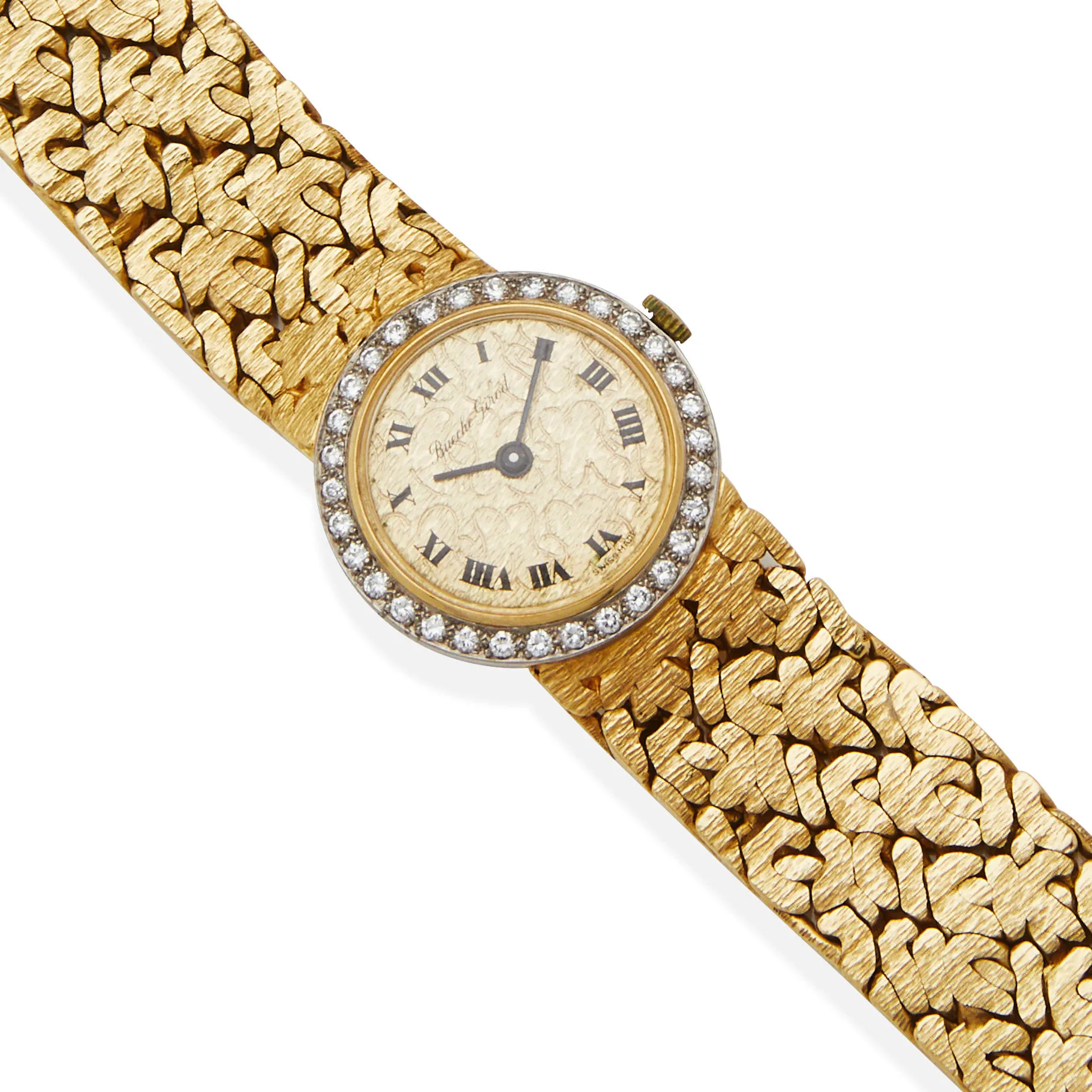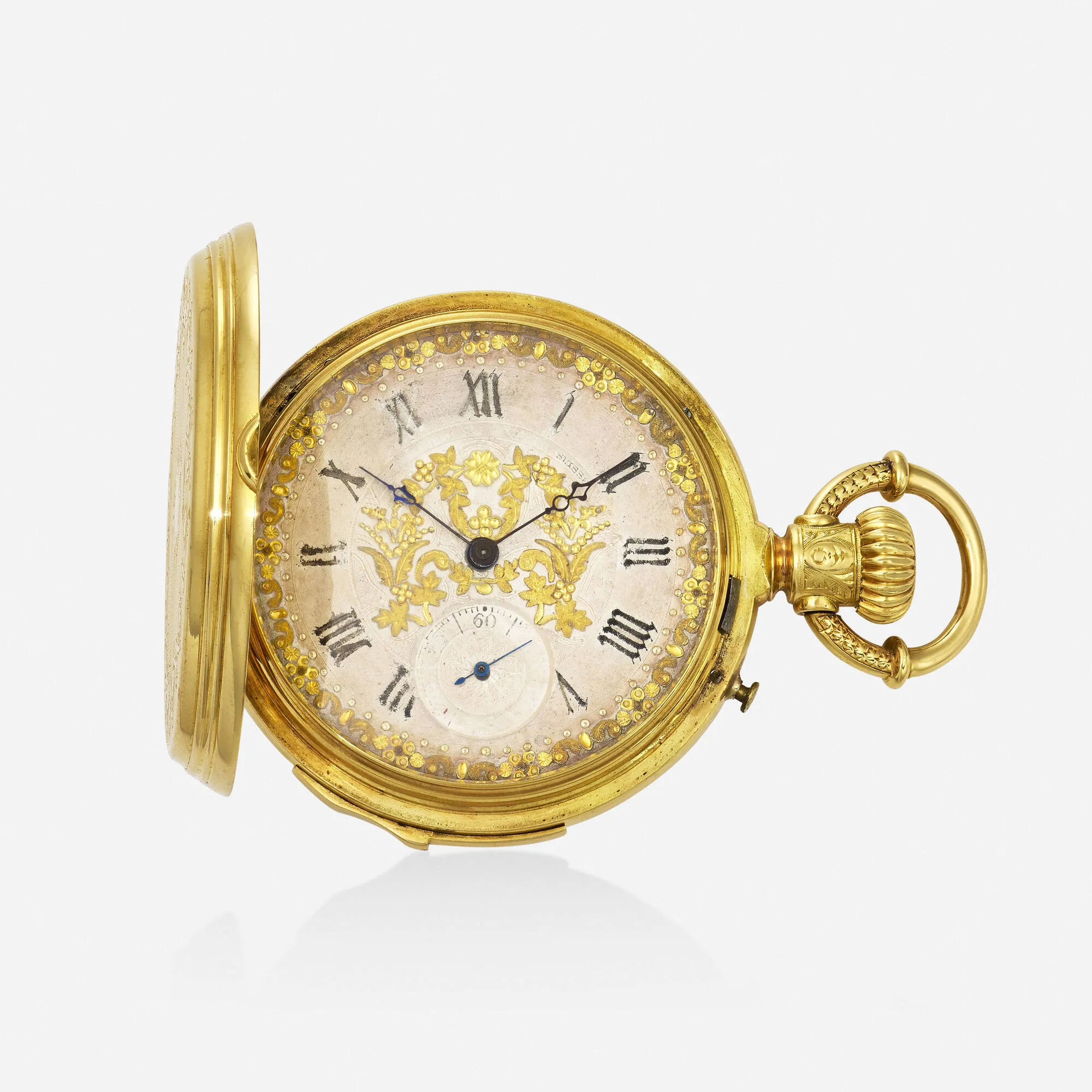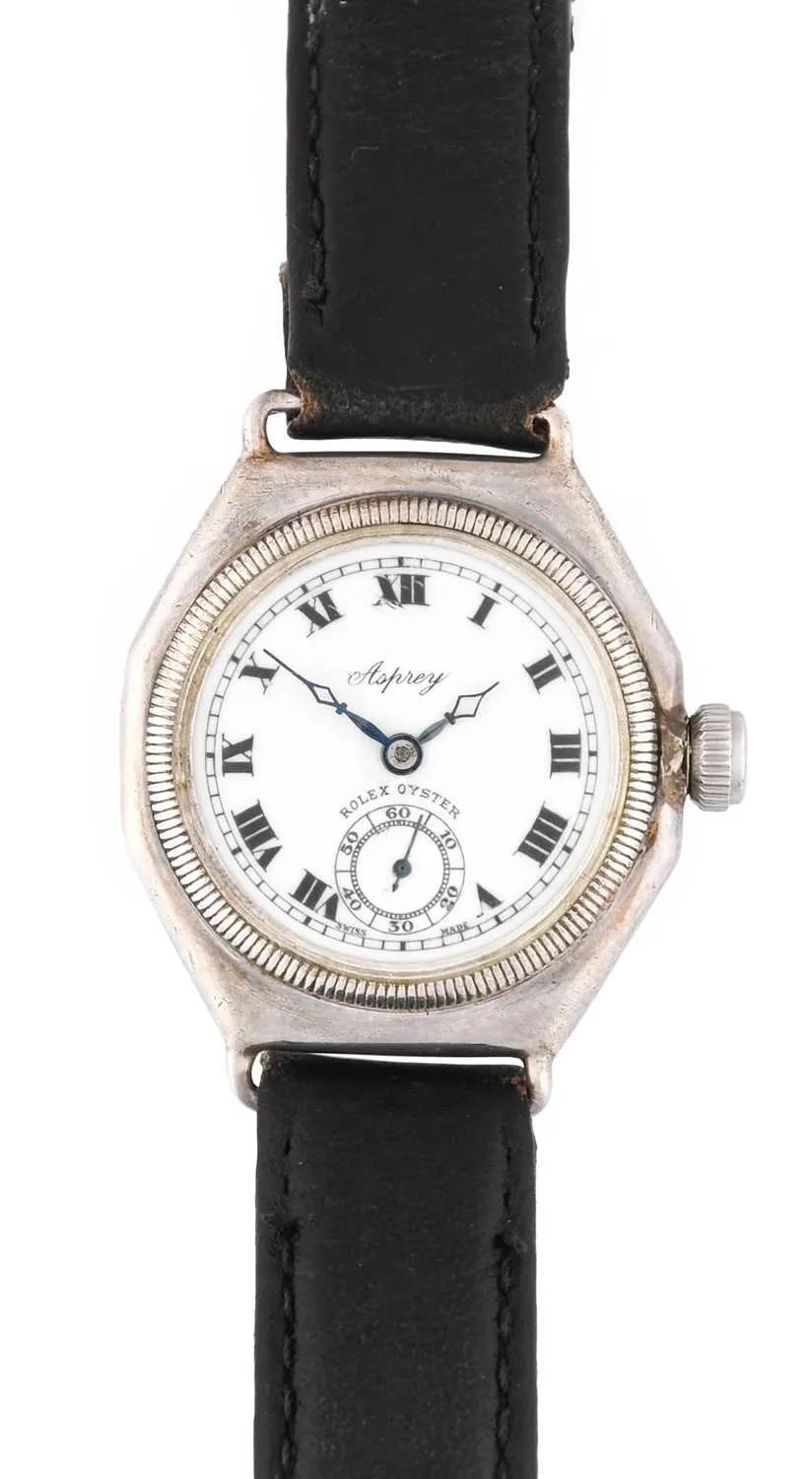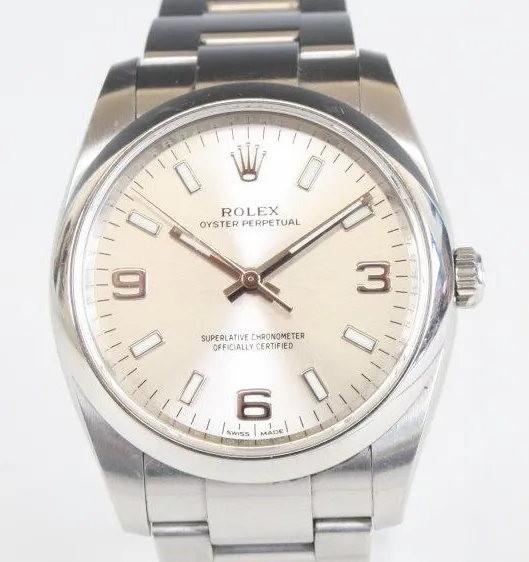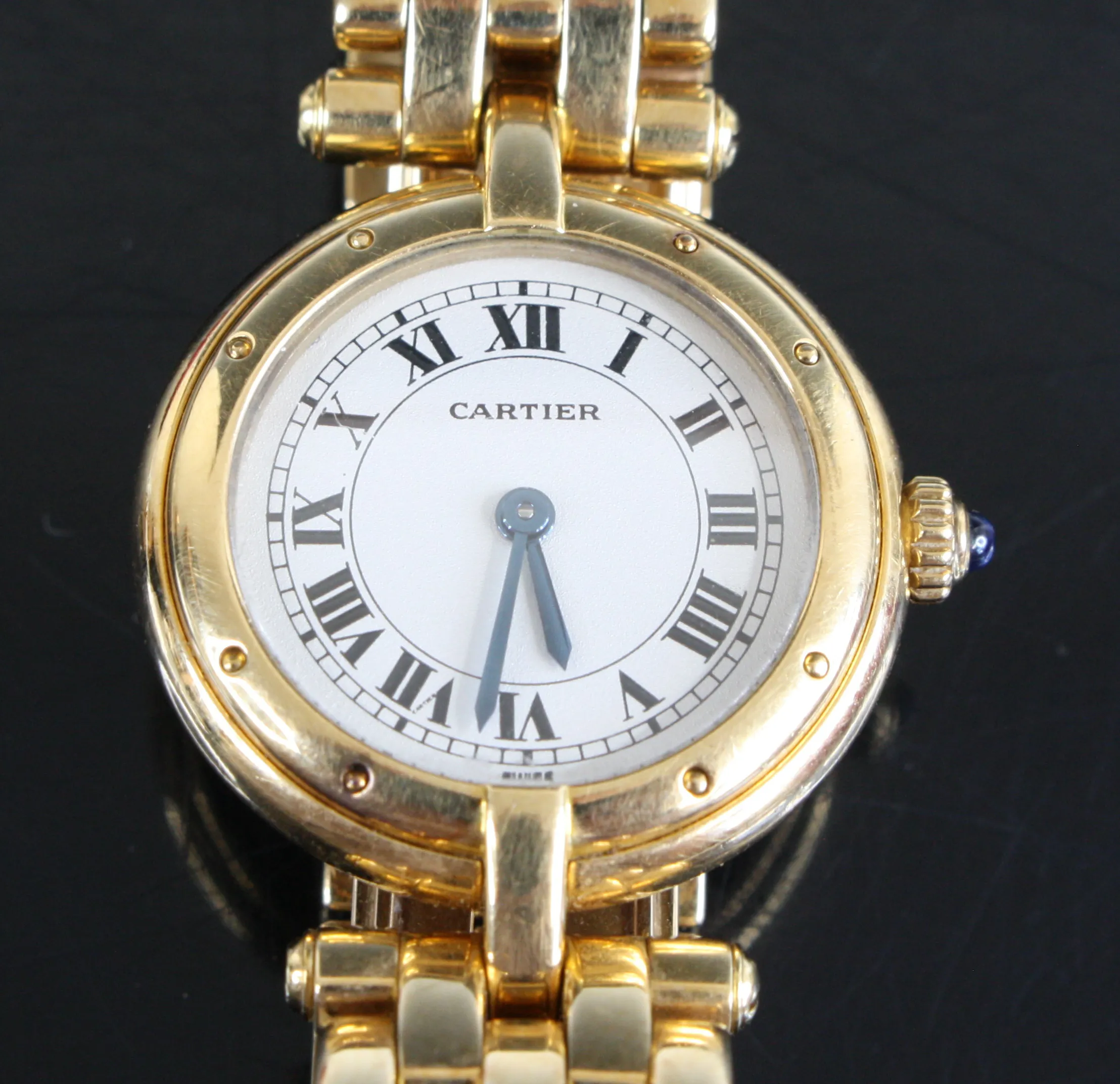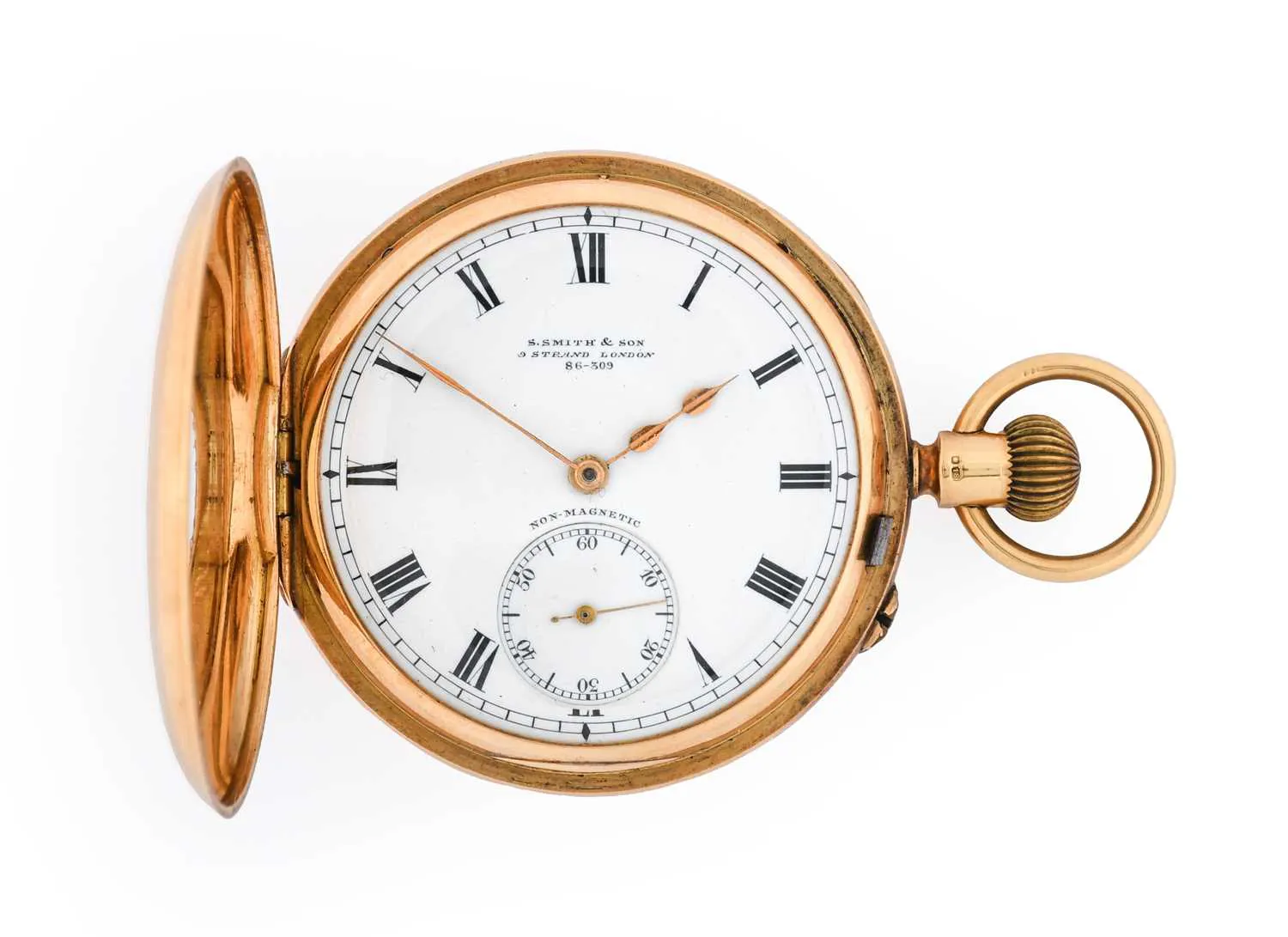Source:
Event:
Date:
Lot Number:
Condition: -
Year of Production: 1800
Case Size: 55mm
Case Material: 18k yellow gold
Dial Color: White
Bracelet/Strap: -
Movement Type: -
Box: No
Papers: No
Location: United Kingdom
Estimates 1,570 - 2,355 USD
Sale Price
Description
A GEORGE III 18CT GOLD PAIR-CASED POCKET WATCH WITH DUPLEX ESCAPEMENT
JOHNSON, LONDON, 1800
The gilt full plate fusee movement with four columnar pillars pinned through the backplate, scroll-shaped stop-iron block, five-spoke wheel crossings and duplex escapement regulated by sprung three-arm steel balance with Tompion type regulation, the backplate with fine asymmetrical rococo foliate scroll pierced and engraved balance cock with faceted diamond endstone and grotesque mask at the junction with the conforming engraved foot, flanked by silvered regulation disc set within adjacent applied scroll engraved panel infill opposing signature
Johnson, London
, and
No. 1584
, the circular white enamel Arabic numeral dial with vertically aligned numerals and gilt
spade
hands, the inner case applied with suspension post and bow at twelve o'clock and the outer with slender moulding to the circumference, both cases with marks for London 1800, makers
IM
for either James Marson (registered June 1775) or James Macklin (registered August 1777).
The pillar plate 4cm (1.0625ins) diameter, the outer case 5.5cm (2.125ins) diameter.
Numerous watchmakers with the surname Johnson are recorded working in London around 1800 hence a likely candidate for the maker of the present lot cannot be ascertained with any degree of certainty. The single-wheel duplex watch escapement employed in the current lot is to a design developed in its final form by Thomas Tyrer, who patented it in 1782. The duplex escapement is a form of frictional rest escapement which when properly set-up can achieve a very good rate, however it can be temperamental due to its tight tolerances and susceptibility to shock. The duplex escapement was subsequently generally superseded by the more reliable lever escapement which was further developed and refined during the first decades of the 19th century.



